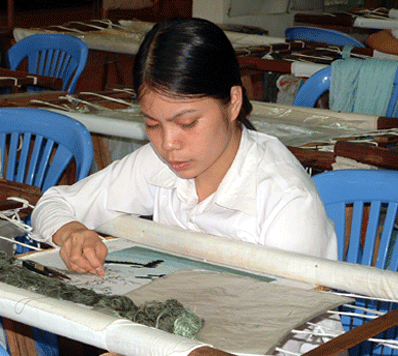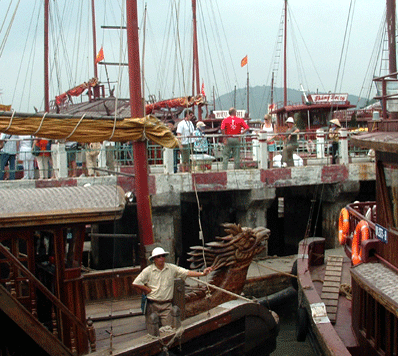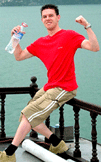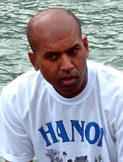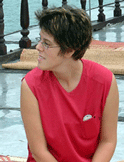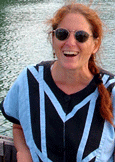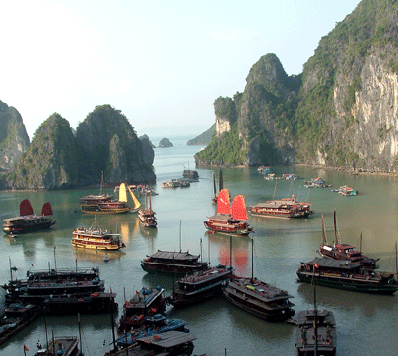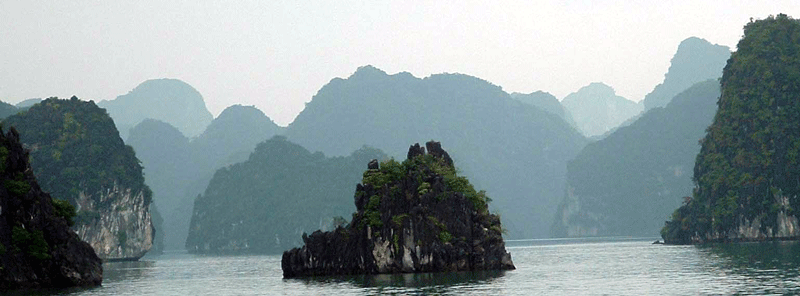
Tales of a 21st Century Gypsy
November 5, 2004 Ha Long Bay
One of my Vietnamese colleagues told me to visit Ha Long Bay while I was in Hanoi. It turned out to be easy. I asked at my hotel about trips, and they signed me up for an overnight excursion on the spot, door to door pickup and delivery, all my meals, room on the boat, and only $43. Can’t beat that!
It was a proper organized tourist venture. A dozen of us in a minibus, with a Vietnamese guide who chattered endlessly into his microphone in broken English, pointing out sights on the road, telling us to look at the “splendid” landscape, sketching out our itinerary. A three-hour drive to Ha Long, with a stop on the way “for breakfast” and to see traditional Vietnamese crafts being made. Then onto our boat at Ha Long harbor. Lunch on the boat. Stops at a famous cave, a beach. Dinner on the boat. I stopped paying attention at that point, so I don’t know what else he said.
The stop for breakfast and crafts was classic tourism. We stopped at a modest complex with a café selling coffee and sweet rolls and packaged cookies and cigarettes, and counters selling horribly overpriced crafts. On one side of the building twenty or so young Vietnamese women were embroidering the thread pictures that I was so taken with the first time I was in the country. I watched them for quite a while – I had always wondered how they managed to create such complex illustrations in thread. It actually seems pretty simple now that I’ve seen it. Their fabric is stretched on a tight frame, and they sew stitch over stitch in rapid succession, laying one color over another to get the gradual shading that I’d wondered how to do. Our guide told us that this workshop hired handicapped people, and indeed the pretty girl up front appeared to be missing a leg. No one else was handicapped, of course, but perhaps that was meant to justify the exorbitant prices? Every tour en route to Ha Long seemed to stop there, and the parking lot was a madhouse of buses crowding in and out, groups of Europeans and Australians and Americans and South Africans in search of the bathroom or trying to figure out which was there bus so they could get back on it to leave.
